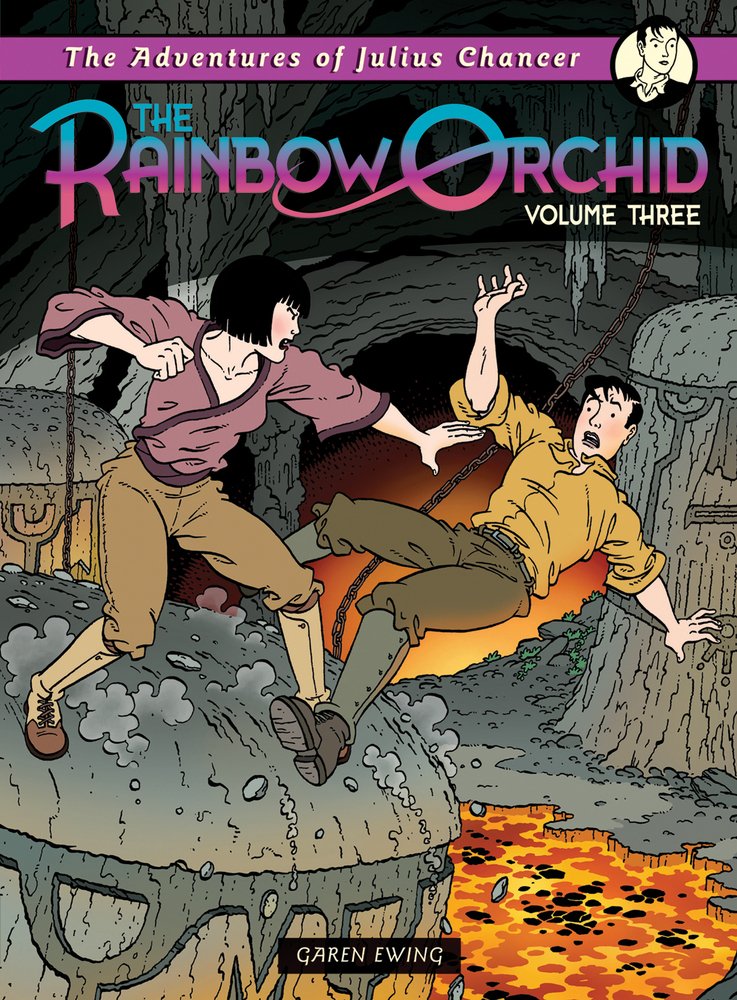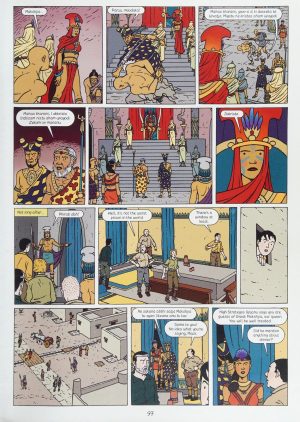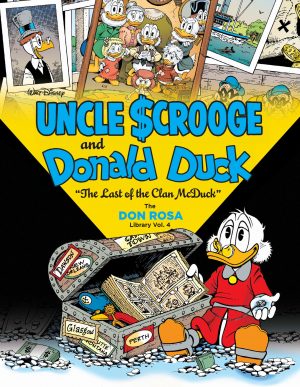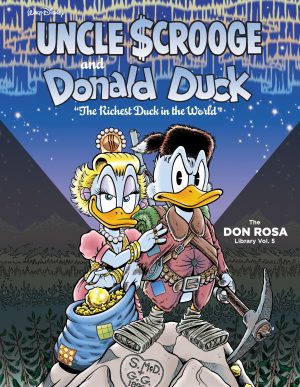Review by Frank Plowright
A search for a possibly mythical flower has prompted adventure and danger in the 1920s for Julian Chancer and his band of friends. At stake is thwarting the ambitions of a shady businessman whose henchwoman is seen endangering Julius on the cover. Evelyn Crow has proved a dangerous and tenacious foe with a skill for surviving fatal circumstances.
Having already delivered a full dose of entertainment, Garen Ewing ended Volume Two with a cliffdropper rather than a cliffhanger, although older readers may well suspect there’s little narrative purpose in discarding the primary comic relief for a shock. Although there have been pauses, from the first mention of the fabled rainbow orchid much of The Rainbow Orchid has been a journey, and that continues, although now into wilder territory as the cast traverse the long forgotten Uskandagadri Pass in the Himalayas. Counterpointing that are the rum goings-on in England, although they’re very much secondary, there to sustain dramatic pauses for the main characters.
As seen on the sample art, there’s no slackening off when it comes to the detail provided throughout the series, and if anything Ewing elevates that to new heights by virtue of massive ancient pictograms being introduced. There’s a greater emotional involvement between characters here, and the subtlety of the illustrations ensures readers understand what’s going on despite the dialogue being in a different language.
There’s a little too much explanation required when one character’s story comes tumbling out, their past integral to the present, but almost in the same scene there’s a fine revelation of polarised intentions. Better still, these are motivated by goodness rather than personal gain, although the end result is the same.
This is a stirring conclusion to an intelligent adventure that constantly surprises. Yes, Ewing wears his influences on his sleeve, but The Rainbow Orchid is far more than a clever homage. Although Hergé shows the way, it took half a dozen albums before he produced anything near as good as Ewing constructed first time out. The best way to appreciate it is via The Complete Rainbow Orchid.




